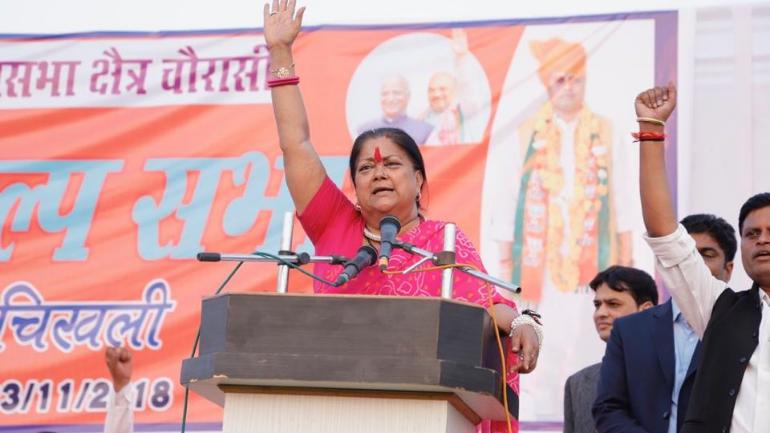The last phase of the ongoing assembly elections finally came to an end today, with Rajasthan and Telangana going to polls. Based on several factors, the indications from the ground seem to suggest that both states will re-elect their respective governments to power. Although none of the psephology agencies had announced their exit-poll predictions at the time this article was went to press, there are enough reasons to believe that political status-quo will prevail.
Election analyst Praveen Patil put out a video about Rajasthan earlier in the day, which contained certain interesting insights that essentially suggest that the Congress Party dethroning the BJP in the state of Rajasthan is a virtual impossibility. The video says that in most states where the BJP is a serious player, it reached an electoral peak during the 2014 Lok Sabha elections in terms of vote-share. Unlike most parties which find it hard to maintain such a high vote-share, the BJP has successfully maintained it whenever assembly elections were held in those states, their loss being only 5% on average. The state in which the BJP’s vote-share had the steepest decline after the 2014 general elections was the state of Gujarat, where their vote-share during the assembly elections was 10% lower than 2014. Even if the BJP was to lose 10% of its vote-share just like it did in Gujarat, it would still have a 46% vote-share, which is enough for a comfortable victory. On the contrary, the Congress Party which attained a historic low in terms of vote-share in 2014, has only recovered 2% on average in the states where it continues to be a serious player. A 2% jump in the Congress’ vote-share would take it to only 33%. And if the parties were to flip positions, as in the Congress Party were to take the pole-position in terms of vote-share, it would require a swing of 20% of the BJP’s voter base. A swing of 20% would mean one in five BJP voters voting for the Congress this time around, which is unthinkable. Firstly, such a swing would have been visible on the ground, but there are no signs of it. And secondly, considering how popular the party is among large demographics, for example among the women of the state, such a shift seems ludicrous.
https://www.youtube.com/watch?time_continue=13&v=CsW7yQ-Hawc
Many Lutyens media analysts predicted that Telangana would go the Mahakutami way, Mahakutami being the new TDP-Congress alliance which has taken on the TRS in Telangana. But this seems highly unlikely for several reasons. To begin with, this assumption was based purely on electoral arithmetic, by adding up TDP and Congress’ vote-share. The fact that this was their individual vote-shares, votes which they received when they contested separately and against each other, suggests that the transfer of votes won’t be as simple as the armchair analysts seem to think. Furthermore, this blog makes the point that if history teaches us anything, it is that in such a situation the TDP is likely to get decimated. Just the way SP and BSP lost their voter base in Uttarakhand after Uttar Pradesh split, and the way RJD and JDU lost their voter base in Jharkhand after Bihar split, TDP too will lose its voter base in Telangana. As a general rule in India politics, regional parties cannot dominate the political landscape of more than one state.
At the time of writing this article, it seemed as if the turnout in Telangana would be massive. With no major factor that might have led to anti-incumbency, and no visible anti-TRS wave on the ground, it looks like Chief Minister K Chandrashekhar Rao’s high decibel campaign against his political opponents seems to have worked. Moreover, despite being the country’s newest state, Telangana has excelled in the ease of doing business, topping several surveys consistently. KCR also projects himself as the father of Telangana, having been the man who led the successful breakaway movement. The only way Telangana’s high turnout can be explained, is that the TRS is returning with a thumping mandate.
Apart from Rajasthan and Telangana, most serious analysts believe that the BJP governments are returning in Madhya Pradesh and Chhattisgarh as well. The biggest takeaway from this election season is likely to be that the rule of anti-incumbency as we know it, is dead.
